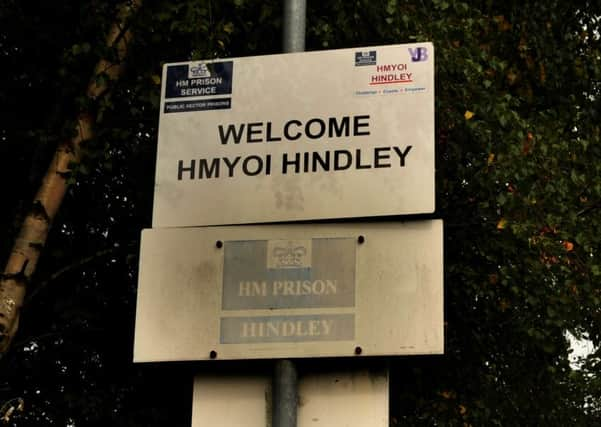Youngsters placed in prisons miles from homes


A new report out today reveals some young inmates have been sent to institutions almost 200 away from where they live.
And inspectors found that young inmates in custody further from home had fewer visits from family and friends.
Advertisement
Hide AdAdvertisement
Hide AdOne boy was 187 miles from home and had not received a family visit in four months following his transfer from a young offender institution closer to home.
Analysis by HM Inspectorate of Prisons found that each each 25-mile interval that a child was held from home was associated with one less visit from a relative or friend.
The watchdog’s report said: “Those children held furthest from home (over 100 miles) frequently said that their parents either no longer visited, or visited monthly or less.”
Over the last decade the number of children in young offender institutions or secure training centres in England and Wales has fallen, dropping by more than two-thirds from 2,467 in April 2005 to 802 in April 2016.
Advertisement
Hide AdAdvertisement
Hide AdThere has also been a reduction in the number of establishments where children can be detained. There are now five young offender institutions (YOIs) and three secure training centres (STCs), compared to 11 YOIs and four STCs in 2012.
Chief Inspector of Prisons Peter Clarke said: “Inevitably, this has meant some children have been held further from home than might have been the case some years ago.”
Figures cited in the report suggest that in 2005/2006 the average distance from home was 45 miles (72km) as the crow flies, while in 2015/16 this had risen to 49 miles an increase of nine per cent.
However, HMIP concluded that being placed in custody miles from home did not have a significant impact on other experiences of custody, and could help some boys keep away from gang influence.
Advertisement
Hide AdAdvertisement
Hide AdYoungsters did not raise many concerns other than the impact on receiving visits, and inspectors did not find evidence of differential treatment of those children who were far from home.
However, in one “worrying” finding, survey analysis showed nearly half of children had at some point felt unsafe in the YOI or STC where they were detained, irrespective of their distance from home.
Mr Clarke added: “It was reassuring to find that being placed in custody far from home was not a disadvantage to children in many respects.
“The negative impact on family ties and the implications this has for successful resettlement and turning children away from crime cannot, though, be ignored.”
A review of the youth justice system ordered last year has recommended that young offenders serve sentences in “secure schools”.